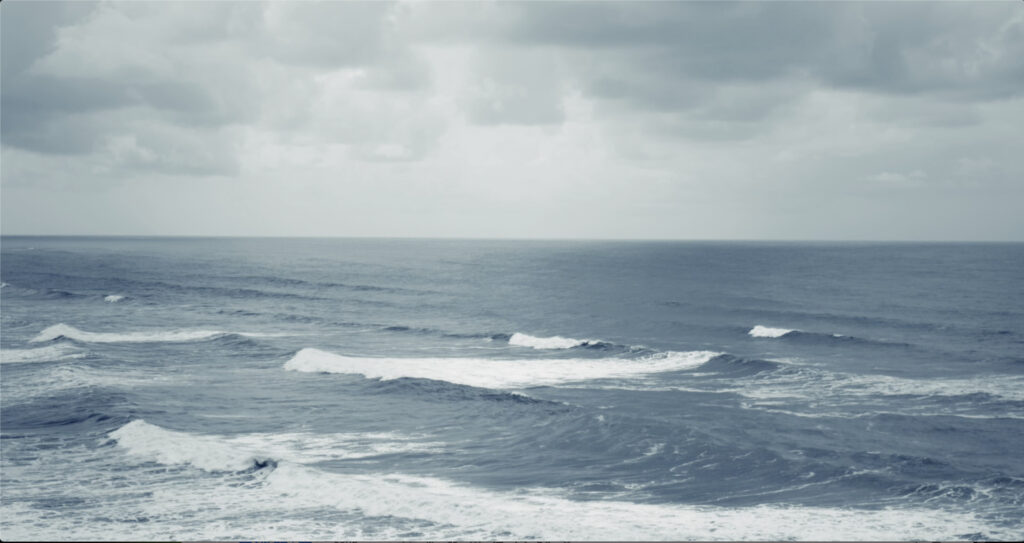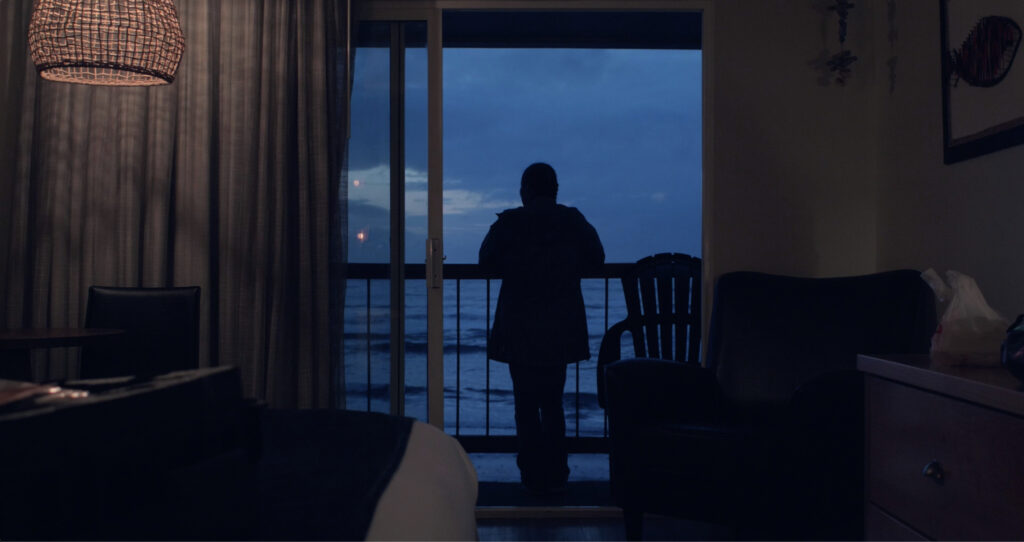BFMAF regulars will be familiar with Hopinka’s work, shown in three previous editions of the festival. His 2017 short Dislocation Blues—“an incomplete and imperfect portrait of reflections from Standing Rock”—won that year’s Berwick New Cinema Award, leading to a Propositions presentation with Hopinka’s short films, reading and conversation in 2018. His dextrous work extends across writing, visual art, photography and cinema, each of which provides some bearing on the other areas. The result is a versatile experimental aesthetic that shifts and transforms across media, though as he succinctly summarises the central theme of his work, “personal positions of Indigenous homeland and landscape” come to the fore.
maɬni – towards the ocean, towards the shore locates this personal positioning in the third person, with the filmmaker’s embodied perspective aiming to relate the experience, philosophy and thinking of Sahme and Mercier, who never meet at any point. The film foregoes much of the abstractions found in Hopinka’s short form works in favour of a more direct, literal, photographic and legible document of his interactions and experiences with the film’s two subjects. Language, an ever-present theme in Hopinka’s films, plays a major part; the film is mostly spoken in the indigenous Chinuk Wawa language, including the filmmaker’s creative and poetic narration.
While perhaps less abstract and essayistic in style than Hopinka’s short filmmaking, the continuity remains in the method of the film’s production. The filmmaker shot and edited the film mostly on his own, with some assistance in the sound recording as well as the soundtrack composition. But this remains an individual, artisanal film without crew, script or the many trappings of a typical feature production. Instead, maɬni transmits to the viewer a sense of the immediacy with which the images were captured and the beauty of not knowing exactly how things might unfold. That the film’s extended topic of discussion is based around the Chinookian origin of death myth (Imał)—and the circular space between beginning and end, death and rebirth, life and the afterlife—makes this unfolding and not knowing all the more poignant. —Herb Shellenberger



